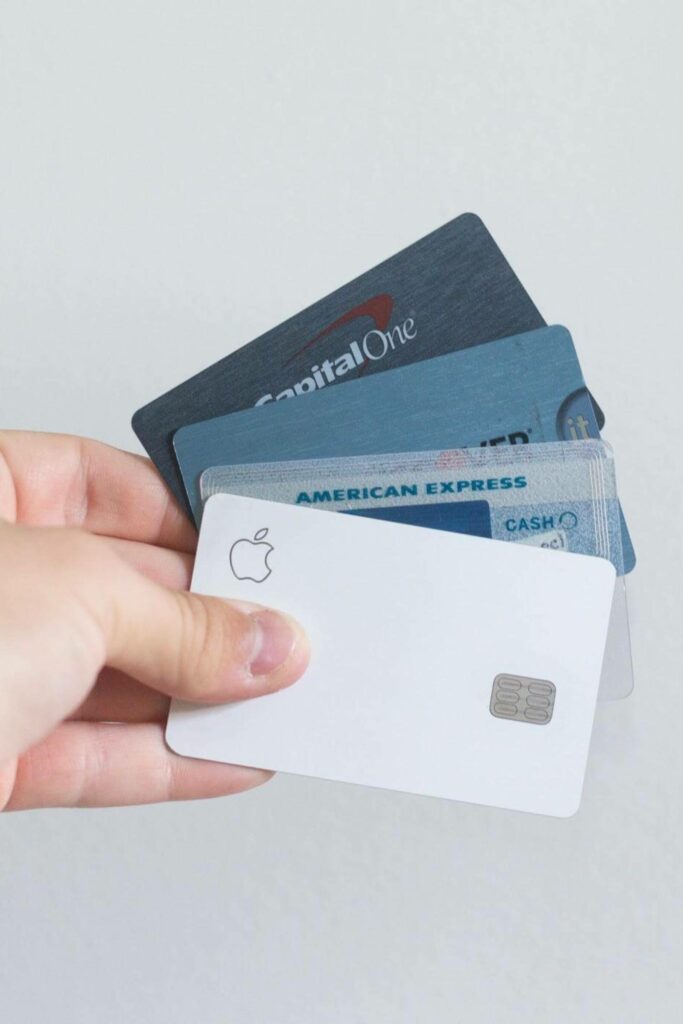The grocery budget is one of the hardest budgets to keep under control. Even seasoned budgeters have a hard time with it. The Official USDA Food Plan for December 2015 lists the thrifty, or cheapest, food plan as spending $563.70 for a family a four with 2-3 and 4-5 year old children and a whopping $648.80 for the same family of four with children 6-8 and 9-11 years. The USDA Food Plan also specifies that”another basis of the Food Plans is that all meals and snacks are prepared at home.” That doesn’t sound very “thrifty” to me!
So how do you save some money on food?
My family and I are a family of four. We have two little girls ages 3 and 6. We are fortunate to be able to keep our budget down most months to $250. I say most because occasionally we go over that budget. So how do we do it?
Here’s some conventional tips that I’ve used to keep the budget low most months.
1. Meal Plan
What meal do you and your family eat the most together? If you’re a Monday through Friday household like we are, it’s probably going to be dinner. Depending on your schedule, it may be breakfast or lunch. What ever meal you and your family frequently eat together, take the time every Saturday or Sunday to plan for your meals. This takes only about 30 minutes of your time. Go through your pantry, refrigerator, and freezer and see what you have on hand for the week and then put it on a calendar. My wife and I share a calendar on our iPhones so we are both in the know of what we are planning to eat. Depending on how often you go to the grocery store, you can do this for 1 week or 2 weeks at a time.
2. Go to the Grocery Store Less
If you find yourself struggling to keep your grocery budget under control, going to the store less may just be your ticket. Grocery stores are laid out and arranged to get you to buy either things you don’t actually need or items that are more expensive. Think about all of those (delicious!) candy bars at the checkout counter. Stores make it harder to resist and easy to impulse buy. Going to the store less will lessen your exposure to that and make it a lot easier to resist temptation. It’s done wonders for my impulse buying! I recommend every week at the very least. We try for every week to two weeks.
3. Don’t Go Shopping Hungry
I realize that everybody uses this one. That doesn’t mean it isn’t true. I can’t tell you how hard it is to keep from buying more groceries when you are hungry. Do whatever you can to keep this from happening. Have dinner before hand. Have a snack if it isn’t meal time. You’ll thank yourself. I can’t tell you how many times I’ve come home with snacks and other things that weren’t on my list. Which brings me to the next tip…
4. Don’t Just Go With a List, Stick with the List
Conventional wisdom says to go with a list. I think it’s harder to actually stick to the list. It’s important that you do though. Again, things like going to the grocery store less and meal planning will help a lot. However, all of that planning goes to waste if you can’t stick to the list. A $50 shopping trip can easily turn into a $100 if you don’t stick to your list. In fact, I recommend not going to the store without a list at all! Even if you only need to get one or two items, write them down and then look at it while you’re at the store. This will not only help you stick to the list regardless, it will also give you great practice when you have largest lists and you are close to running out on your budgeted dollar amount.
5. Buy Generic
The two places my family and I shop most for groceries is Super Target and Aldi. Target carries both name brand and their own generic brand called Up & Up. Aldi rarely has name brand items. 9 times out of 10 my wife and I have found that the generic brand is just as good and even sometimes better (Easy Mac N Cheese) than the name brand. They are also a lot cheaper most of the time. Consider this. A one pound (16 oz.) bag of pretzels for a Snyder’s Pretzels is $3.09 at Target. A one pound bag of pretzels at Aldi (their in house Clancy’s brand) that tastes exactly the same is $1.69. That’s a $1.40 difference. That’s almost another whole bag of pretzels at Aldi! Shop generic as much as you can. And…
6. Shop at Cheaper Stores
How long do you think it’s been since I’ve stepped foot inside a Jewel or similar store to grocery shop? A long time! For our purposes, Super Target (with their Cartwheel App and Red Card) as well as Aldi work very well for us. Wal-Mart is another store that generally has cheaper prices on everything. Always the low price right? The nice thing about shopping at cheaper stores is you don’t need to waste time and energy looking at weekly ads for four different grocery stores trying to figure out what you want to eat/buy and your plan of attack for actually getting to all of the stores. Target also has a great phone App called Cartwheel (mentioned above) that allows you to scan the grocery items while shopping and see if there are additional savings. A lot of times you can save an additional 5% to 20% on some items, and it’s very easy to use!
7. Keep a Rough Running Tally While You’re Shopping
One of the things I like to do to make sure I’m not spending more than I need to is to keep a running tally on the calculator on my phone while I’m shopping. I usually round up to the nearest 10 cent to account for sales tax. This allows me to make some changes as I go along. If I go to the store knowing I have $75 left for the budget and a week and a half until the end of the month, I can do additional rearranging at the grocery store if I’m starting to come close.
Side Note: My wife and I took some time to actually cross shop Wal-Mart and Target to see what was cheaper. What we found was that Wal-Mart had some items cheaper and Target had others cheaper. We decided to stick with Target because the Red Card gives you 5% off on everything. Literally everything! That tipped the scale in favor of Target.
8. Buy Frozen Vegetables
No, I’m not talking about buying vegetables in the shape of Anna, Elsa, or Olaf. I’m talking about actual bags of frozen vegetables that you can find in the freezer section! If you buy frozen, you don’t have to worry about waste which can be a big sinkhole in your grocery budget. You also don’t lose much in the way of nutrition. We like to buy the white and gold frozen corn from Target. It tastes like it just came off the cob! Frozen veggies are also very easy to prepare and taste much better than their canned counterpart. Most come in a bag that will steam the veggies for you so you just have to take them from the freezer, pop them in the microwave, and voila! Fresh and easy delicious veggies!
9. Leave the Kids At Home
This can be done by either utilizing a babysitter or either you or your spouse staying home to watch the kiddos. The idea here is that you will be a lot less distracted. You’ll be able to focus on things like sticking to your list and keeping a tally. You’ll also be less likely to buy things for the kids just so they stop asking you to buy things for them. We’ve all been there. Besides, this can make the already stressful grocery shopping experience a little more relaxing. Give it a try!
10. Shop for Fruits and Veggies In Season
My girls love blueberries. They can go through a container of blueberries in one sitting if we’re not careful! They also enjoy strawberries a lot. Sadly, neither of those delicious berries are in season during the winter months in our area. In season, a pint of strawberries can cost as little as $1.99 without a sale. Out of season, they can cost upwards of $5 for the same pint! Guess who doesn’t buy strawberries out of season. This guy! Shopping in season not only saves you money, but it also leads to less waste. In season fruits tend to last longer because it is the ideal environment and weather for them to grow. Get to know what produce is in season and what times of the year. Focus on the produce that you generally buy to save time. I’m sure your local grocer or farm stand would be happy to help!
So that’s 10 mostly conventional tips that you can use to start saving money this month on our grocery budget. Don’t wait to try and implement some of these. Try them now and let me know how it goes!
Our next post is going to deal with some unconventional tips. If you have an unconventional tip on how to save groceries, share it in the comments below and I may mention it (with credit, of course!) in the next post. Also, please share these tips with your friends and family!


















